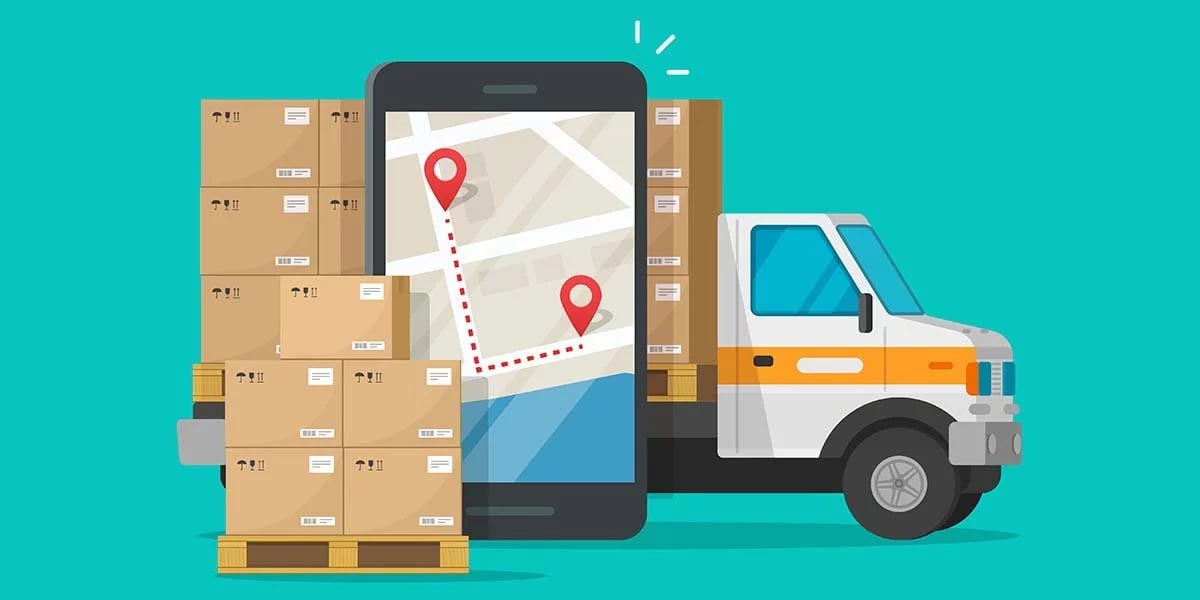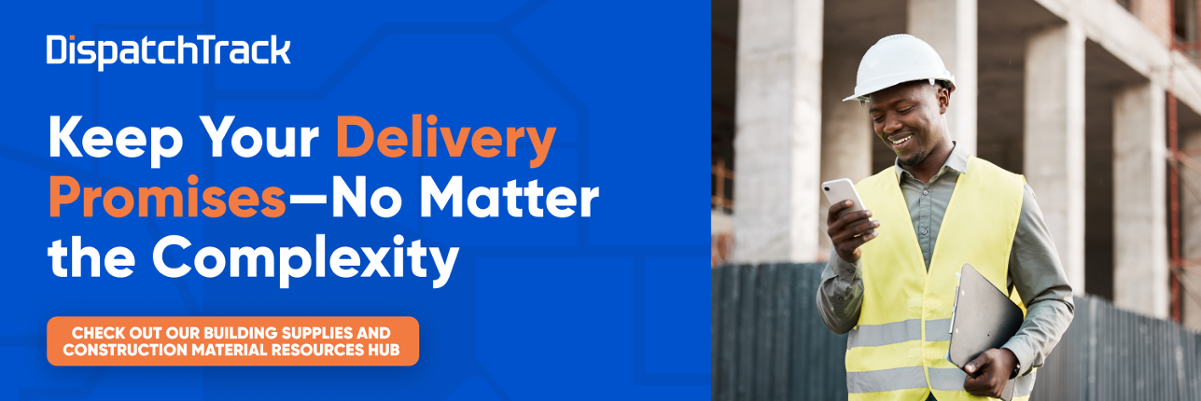Building supplies deliveries might be chaotic, but it’s possible that the average job site is even more so—at least from the perspective of whoever’s managing it. People, parts, and materials all have to be carefully coordinated in spite of changing conditions and tight timelines. There are a lot of moving parts, and a lot has to go right to keep things on track.
 Given all that, it’s no wonder that expectations for delivery experience have been ratcheting up. Contractors and job site managers see the kinds of delivery experiences that they receive as consumers—e.g. if they’re buying a new couch or a washing machine—and they don’t see why they shouldn’t have the same kind of delivery experience in their professional life. After all, why should delivering a pallet of lumber be any different from a new mattress when it comes to things like sending notifications and enabling real-time delivery tracking?
Given all that, it’s no wonder that expectations for delivery experience have been ratcheting up. Contractors and job site managers see the kinds of delivery experiences that they receive as consumers—e.g. if they’re buying a new couch or a washing machine—and they don’t see why they shouldn’t have the same kind of delivery experience in their professional life. After all, why should delivering a pallet of lumber be any different from a new mattress when it comes to things like sending notifications and enabling real-time delivery tracking?
Of course, there’s plenty of reasons why it’s difficult to provide that kind of customer delivery experience in building materials distribution. There’s also plenty of reasons to prioritize finding a way to overcome those hurdles and provide a B2C-like experience anyway. For one thing, it can help you boost your delivery NPS and increase customer loyalty. For another, it puts you in a position to decrease inbound where’s-my-order calls from customers, thereby reducing costs. It can even help you reduce overall communication costs via automation.
The question is: how do you make a B2C-worthy delivery experience happen?
Leverage Timely Communications Across Channels
A great delivery experience starts long before the day of delivery. In fact, it should start the moment an order is placed by the customer. Different businesses will have different communication cadences, but by and large you want to communicate throughout a number of different delivery touchpoints. This might include:
- Delivery schedule messages
- Pre-routing messages
- Route start notifications notifications
- Next stop notifications
- Live alerts when there are changes in ETA
- Arrival notifications
- Survey messages after the delivery is concluded
- Post-delivery follow-up with receipts, invoices, proof of delivery, etc.
Since these communication touch points will happen at different stages in the order lifecycle, it makes sense to be mindful of what communication methods you’re using. If you’re notifying a customer that their order of siding material has been scheduled for the day after next, an email probably makes sense. For day-of notifications, texts or even automated phone calls are more likely to reach their recipients before the information has gone out of date.
When you communicate early and often—and via the right channels—your customers feel confident that they aren’t missing information that they need. And by keeping them posted in real time on the day of, you cut through the chaos at the job site to help your customers get ready for the delivery when it arrives. The result is better communication throughout the entire process—and improved customer satisfaction as well.

Offer Real-Time Delivery Tracking to Customers
Notifications can be extremely valuable in boosting delivery experience, but there’s no substitute for the ability to get order updates as needed from the comfort of your own device. If your customer is wondering when a shipment of roofing material is going to show up so they can plan out the rest of their work schedule, they really don’t want to have to call in to your customer support team for an update.
That’s why one of the best ways to roll out a B2C-worthy delivery experience is to offer live, self-serve delivery tracking through a dedicated customer portal. Your customers might not spend as much time refreshing the screen to see the movement of the truck as your average B2C customer waiting for a new sectional sofa, but having access to live delivery information when they do need it can be invaluable.
The best practice here is to offer a dedicated portal that shows truck location, ETA, and delivery details, all in real time. This is also an area where you can provide visibility to stakeholders beyond the person who actually placed the order. If you install a widget on your website for order tracking, then anyone with the order number can check the status of the delivery as needed to gain visibility into the schedule.
Customize Your Messages by Service Type
This best practice won’t apply to every business, but for those that do offer multiple different service types or different products that come with different delivery requirements or expectations it can be valuable to segment your communications. After all, the same messages most likely won’t make sense for a customer receiving a pallet of goods versus a customer who’s also receiving some kind of installation services.
By customizing your messages to your audience, you create a more personalized delivery experience. This, in turn, boosts confidence that you’re going to deliver as promised and helps build trust between you and your customers. The trick here is to make sure you have a building products software solution that actually enables you to customize your messages in this way.
Enable Two-Way Communications
Again, phone calls are a last resort for most customers—by the time they’ve picked up the phone to tell you that something is wrong, you’ve already lost points on your CSAT score. When they can communicate with you directly via instant messaging or texting, that effect is mitigated. That’s why two-communication between your customers and your team is so valuable in providing a B2C-quality delivery experience.
This can have real benefits for boosting delivery efficiency as well. When the customer can connect with you easily, they’re more likely to surface potential delivery issues before they become a problem, e.g. if they need to reschedule at the last minute. Communicating via instant message enables you to create more visibility into the customer interaction compared to a phone call—which means it’s easier for the entire team to see and address potential disruptions.
Deliver On Time, Every Time
We’ve talked a lot in this article so far about the power of customer communications and visibility for crafting a world class delivery experience. But visibility is only valuable when it’s visibility into a process that’s actually working. Real-time ETA information doesn’t make it any less of a problem when the ETA is wrong or the delivery is running late—any delay still has the potential to impact complex job site schedules.
That’s why one of the most impactful ways to boost the quality of delivery experience you offer to your customers is to find a way to ensure consistent on-time deliveries across the board. In building supplies distribution this is obviously easier said than done, but one way to approach this problem is to leverage AI-powered route optimization to ensure accurate ETAs. By factoring in huge amounts of delivery data from previous runs, AI-powered technology can create ETAs that are significantly more accurate than either manual planners or legacy routing systems can accomplish.
Of course, your routing system has to do more than just generate accurate ETAs. It has to account for all the complexities that go into accurate delivery routing for building supplies—everything from ensuring the right vehicle for a given load to factoring in driver skill for jobs that require services or installations. But if you can make that happen, you can provide a rock-solid foundation for delivery success.
When your systems are running smoothly and delivery plans actually work, the value of your customer experience is magnified. By providing consistent on-time deliveries, you can achieve B2C-worthy deliveries, boosting customer loyalty and bolstering your bottom line in the process.